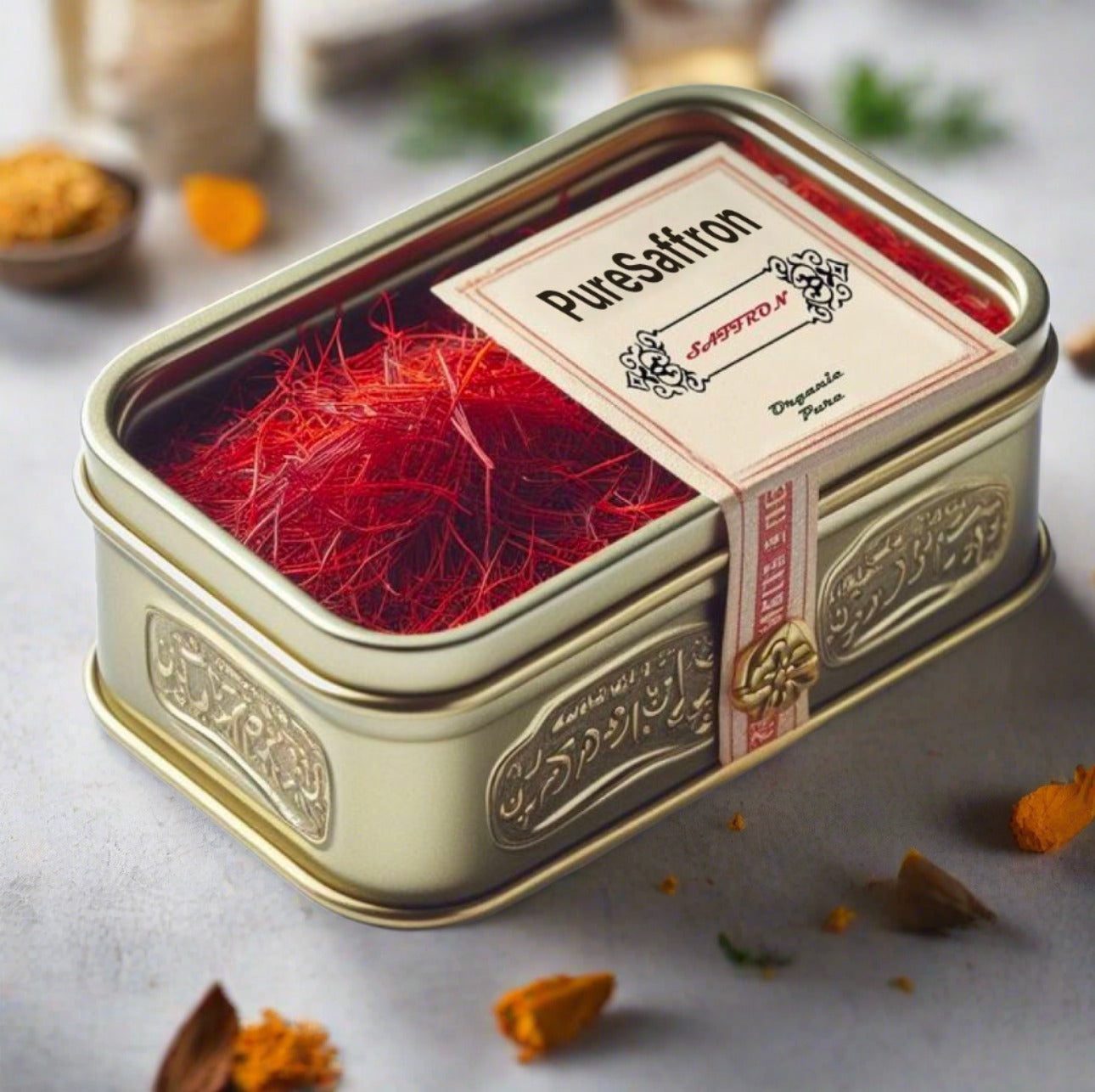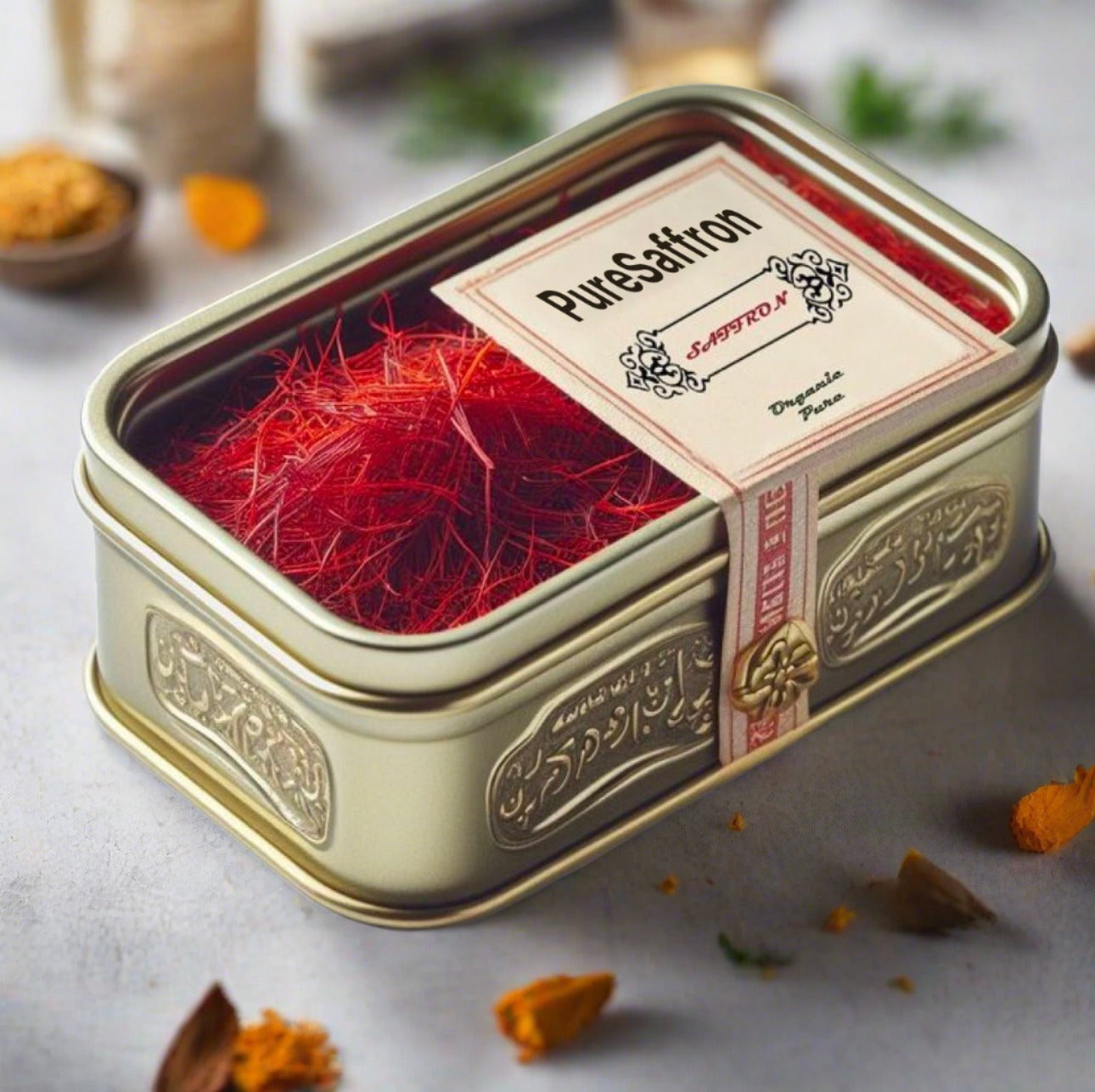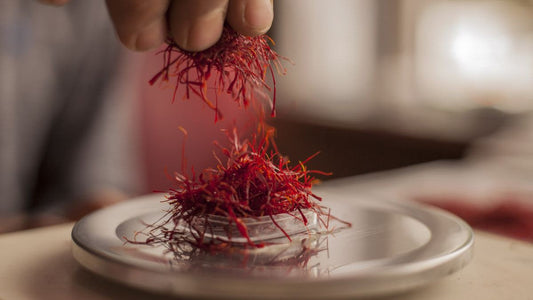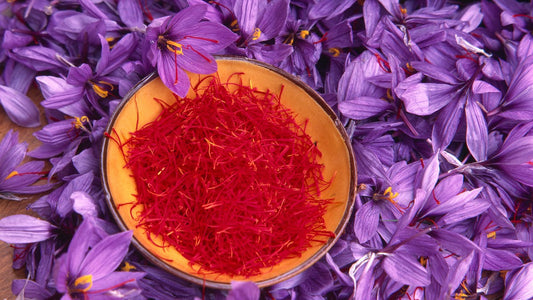
DIY Saffron Face Masks: Natural Recipes for Glowing Skin
Ara OhanianShare
When it comes to natural skincare remedies, saffron stands out as a luxurious and beneficial ingredient. Known for its vibrant color and numerous health properties, saffron has been used for centuries in beauty regimes for its skin-enhancing benefits. This blog will guide you through the world of DIY saffron face masks, explaining their benefits and teaching you how to create them at home using simple ingredients.
Why Use Saffron in Your Skincare Routine?
Saffron, also known as "red gold," is packed with antioxidants, vitamins, and minerals that can transform your skin. Here are just a few of the benefits saffron offers:
- Brightens the skin: Saffron helps reduce pigmentation and dark spots, giving your skin a radiant glow.
- Reduces acne: Its antibacterial and anti-inflammatory properties can soothe acne-prone skin.
- Fights aging: The antioxidants in saffron combat free radicals, reducing fine lines and wrinkles.
- Hydrates and nourishes: Saffron restores moisture and improves skin texture.
These qualities make saffron a versatile ingredient in skincare, suitable for almost all skin types.
How to Make DIY Saffron Face Masks at Home
Creating a saffron face mask at home is easy, cost-effective, and ensures you're using pure, natural ingredients without any harmful chemicals. Below are some popular DIY saffron face mask recipes for you to try.
1. Saffron and Honey Face Mask
This face mask is perfect for dry and sensitive skin. Honey acts as a natural humectant, locking in moisture, while saffron brightens and nourishes.
- Ingredients:
- 5-6 strands of saffron
- 1 tablespoon of raw honey
- Instructions:
- Soak the saffron strands in 1 teaspoon of water for 10 minutes.
- Mix the infused water and saffron strands with honey.
- Apply the mixture to your face and let it sit for 20 minutes.
- Rinse with lukewarm water.
2. Saffron and Yogurt Face Mask
This mask is ideal for oily or combination skin. Yogurt naturally exfoliates the skin while saffron helps to control excess oil and brighten the complexion.
- Ingredients:
- 5-6 strands of saffron
- 2 tablespoons of plain yogurt
- Instructions:
- Soak the saffron strands in 1 teaspoon of water for 10 minutes.
- Mix the saffron water and strands with yogurt.
- Apply the mask evenly across your face and leave it on for 15-20 minutes.
- Rinse off with cool water.
3. Saffron and Sandalwood Face Mask
For those struggling with acne or blemishes, this mask combines the antibacterial properties of sandalwood with the healing power of saffron.
- Ingredients:
- 5-6 strands of saffron
- 1 tablespoon of sandalwood powder
- 2 tablespoons of rose water
- Instructions:
- Soak the saffron strands in rose water for 10 minutes.
- Mix the saffron-infused rose water with sandalwood powder to form a smooth paste.
- Apply the paste to your face and leave it on for 15-20 minutes.
- Rinse gently with water.
4. Saffron and Aloe Vera Face Mask
This soothing mask is great for sunburned or irritated skin. Aloe vera calms and hydrates, while saffron helps repair skin damage.
- Ingredients:
- 5-6 strands of saffron
- 2 tablespoons of fresh aloe vera gel
- Instructions:
- Crush the saffron strands into a fine powder.
- Mix the saffron powder with aloe vera gel.
- Apply the mixture to your face and leave it on for 15-20 minutes.
- Rinse off with cool water.
5. Saffron and Milk Face Mask
This is a classic mask for glowing and soft skin. Milk acts as a gentle exfoliant, while saffron enhances skin tone.
- Ingredients:
- 5-6 strands of saffron
- 2 tablespoons of raw milk
- Instructions:
- Soak the saffron strands in milk for 10 minutes until the milk turns a golden yellow.
- Using a cotton ball, apply the saffron-infused milk to your face.
- Leave it on for 15-20 minutes before rinsing with lukewarm water.
Tips for Using Saffron Safely in Face Masks
- Always perform a patch test on a small area of your skin before applying the mask to your entire face.
- Use only pure, high-quality saffron to ensure the best results. Low-quality or adulterated saffron may cause skin irritation.
- Limit usage to 2-3 times a week to avoid overstimulating your skin.
If you're looking for premium-quality saffron to incorporate into your skincare routine, check out our Persian Pure Saffron.
FAQs About DIY Saffron Face Masks
- 1. Can I use saffron face masks daily?
It's best to use saffron face masks 2-3 times a week to avoid overloading your skin.
- 2. What type of saffron should I use for face masks?
Always use high-quality, pure saffron for optimal results and to minimize the risk of irritation.
- 3. Are saffron face masks safe for all skin types?
Yes, saffron is generally suitable for all skin types. However, perform a patch test first to ensure compatibility with your skin.
- 4. How long does it take to see results from saffron face masks?
Consistency is key. With regular use, you may notice improvements in your skin tone and texture within 2-4 weeks.
- 5. Can I store saffron face masks for later use?
It's best to prepare saffron face masks fresh each time for maximum effectiveness and to avoid bacterial growth.




